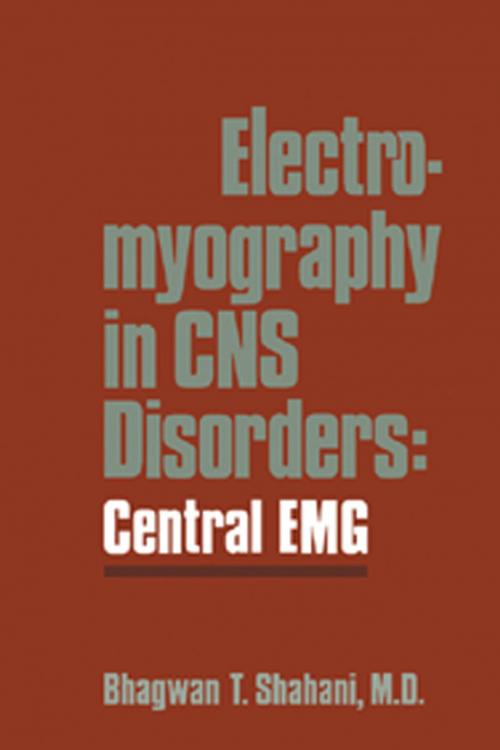Electromyography in CNS Disorders
Central EMG
Nonfiction, Health & Well Being, Medical, Specialties, Clinical Medicine, Health, Ailments & Diseases| Author: | ISBN: | 9781483192697 | |
| Publisher: | Elsevier Science | Publication: | March 20, 2014 |
| Imprint: | Butterworth-Heinemann | Language: | English |
| Author: | |
| ISBN: | 9781483192697 |
| Publisher: | Elsevier Science |
| Publication: | March 20, 2014 |
| Imprint: | Butterworth-Heinemann |
| Language: | English |
Electro-Myography in CNS Disorders: Central EMG presents an extensive examination of the application of clinical neurophysiological studies using nerve conduction techniques to analyze the operation of the Central Nervous System. It discusses the principles behind the concept of central EMG. It addresses studies made in nerve conduction.
Some of the topics covered in the book are the pyramidal and extrapyramidal pathways, principles of motor control; effects of lesions in the motor system; muscle spindles and motor control; signals from skin mechanoreceptors in the human hand; afferent c fiber signals and pain; and sympathetic activity in human peripheral nerves. The definition and description of baroreflex control of vasoconstrictor outflow to skeletal muscles are fully covered. An in-depth account of the activity of a motoneuron pool and the muscle activity spectrum is provided. The mechanism of long-latency stretch reflexes and critical exploration of the pyramidal syndrome are completely presented. A chapter is devoted to description of monosynaptic excitability curves after activation of myotatic arc. Another section focuses on the practical applications of pathophysiological analysis.
Electro-Myography in CNS Disorders: Central EMG presents an extensive examination of the application of clinical neurophysiological studies using nerve conduction techniques to analyze the operation of the Central Nervous System. It discusses the principles behind the concept of central EMG. It addresses studies made in nerve conduction.
Some of the topics covered in the book are the pyramidal and extrapyramidal pathways, principles of motor control; effects of lesions in the motor system; muscle spindles and motor control; signals from skin mechanoreceptors in the human hand; afferent c fiber signals and pain; and sympathetic activity in human peripheral nerves. The definition and description of baroreflex control of vasoconstrictor outflow to skeletal muscles are fully covered. An in-depth account of the activity of a motoneuron pool and the muscle activity spectrum is provided. The mechanism of long-latency stretch reflexes and critical exploration of the pyramidal syndrome are completely presented. A chapter is devoted to description of monosynaptic excitability curves after activation of myotatic arc. Another section focuses on the practical applications of pathophysiological analysis.















